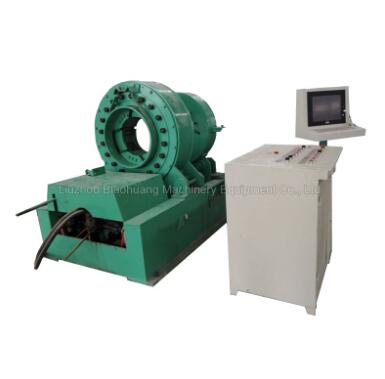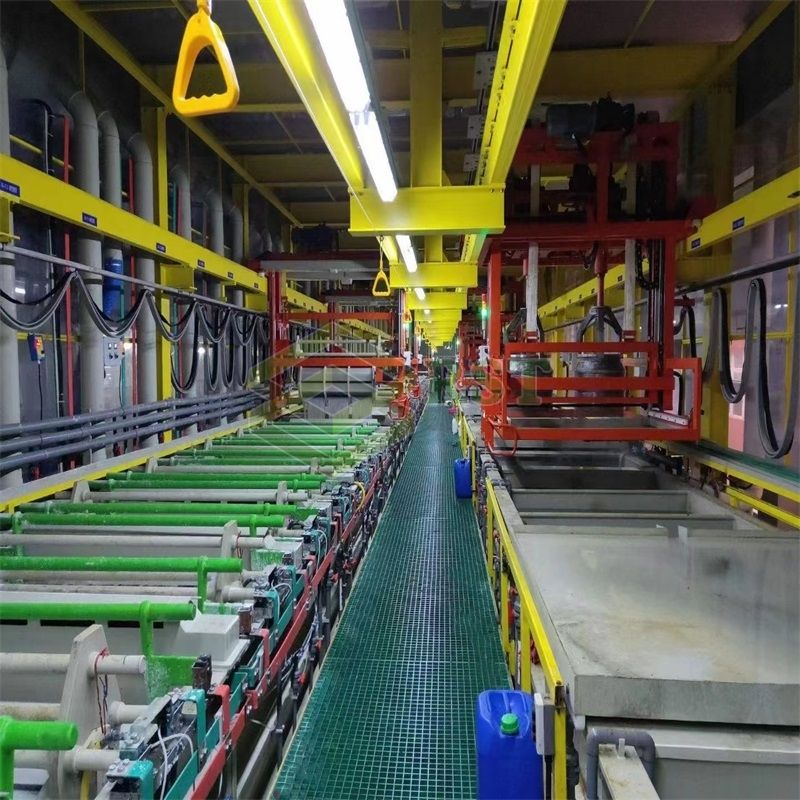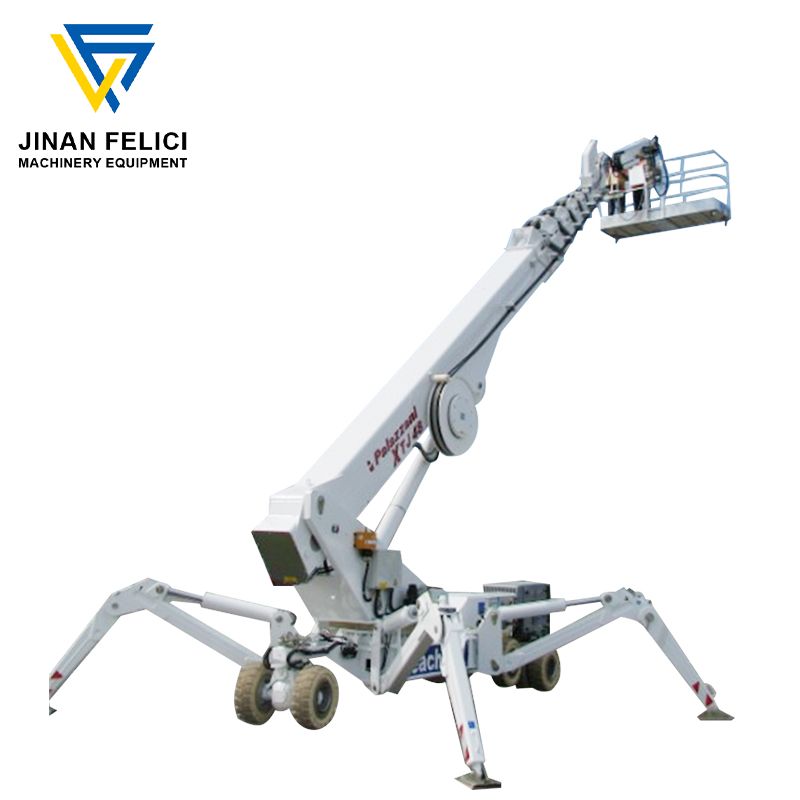What are the Best Metals for Machining? Here are 5 Options
When it comes to product design and computer numerical control (CNC) machining, you’ve got a broad range of engineering materials to choose from for your product design project, including metals, plastics, and composites.
But of all these engineering materials, metals remain the most commonly used in many industries. In fact, the global metal machining market size was valued at $6.17 billion in 2017 alone and is poised to grow at a CAGR of 5.9% during a forecast period of 2020 – 2027.
In this article, we’ll discuss some of the different available metals for machining. Here are five of the most frequently machined metals and their machinable alloys.
#1 SteelSteel is one of the most commonly used metals for precision CNC machining. It is an alloy containing iron and carbon (up to 2%) and a variety of other elements in various amounts.
For example, AISI 1018 carbon steel typically contains 0.15% – 0.20% carbon, 0.05% sulphur and 0.04% phosphorus. AISI 1215 steel contains 0.09% carbon, 0.04% – 0.09% phosphorus, 0.75% – 1.05% manganese, and 0.35% sulfur. Nevertheless, most steel alloys have good mechanical properties and machinability.
One thing to note, though: steel is highly susceptible to corrosion, so it might not be your best metal choice if your machined part will be used in a humid environment.
Learn More: 10 Steel Alloys for CNC Machining
#2 AluminumLike steel, aluminum also holds great importance in a variety of industries. But what really makes aluminum stand out is its lightweight nature and corrosion resistance property.
Aluminum is typically 2.5 times less dense than steel and is less likely to crack during CNC machining operations. Aluminum also forms a layer of oxide (aluminum oxide), which acts to protect the metal from oxygen (the major element that causes the oxidative effect of corrosion).
A major challenge with aluminum is that it forms a gummy buildup when cut or machined. This is primarily due to the low melting temperature of aluminum, making it fuse to the cutting edge of cutting tools.
Learn More: 7 Aluminum Alloys for CNC Machining
#3 BrassBrass is a metal alloy containing copper and zinc. It’s known for its stability, medium hardness, high strength, and, more importantly, good machinability. In fact, brass alloys won’t cause undue wear and tear on CNC machines like the majority of the soft metals used in CNC machining.
However, a major challenge you may experience with brass is its susceptibility to stress corrosion cracking, especially when it comes in contact with ammonia or ammonia-based solutions. To resolve this limitation, you would have to subject the workpiece to heat treatments like annealing during post-processing operations.
Brass alloys are suited for electronic hardware and contacts, gears, and lock components. Its excellent surface finish also makes it ideal for a wide range of ornamental applications.
Learn More: 10 Brass Alloys for CNC Machining
#4 CopperCopper is also among the most widely used metals for machining in a broad range of industries. In addition to being one of the most cost-effective metals today, copper boasts excellent machinability, good surface finish, and good electrical and thermal conductivity.
Another critical property of copper is its ability to fight bacteria. Results from the tests conducted by the U.S Environmental Protection Agency reveal that copper alloys (that contain at least 60% copper) kill 99.9% of bacteria within two hours of contact. This makes copper ideal for fabricating components used in the medical industry like bed rails, faucets, and sinks.
The electronics and semiconductor industries also rely on CNC machined copper components for electromagnets and circuit boards. The only major challenge with copper alloys is their susceptibility to corrosion when exposed to sulfides, halogens, and ammonia-based solutions.
Learn More: CNC Machining Copper
#5 TitaniumAlthough titanium boasts a low strength-to-weight ratio, corrosion and chemical resistance, and high strength, it is extremely challenging to machine. This difficulty is primarily due to titanium’s poor thermal conductivity.
During machining, heat gets trapped in the work zone, causing metallurgical reactions that cause gummy buildup and affect cutting action more severely than other metals like stainless steel and cast iron.
Additional resources:16 Basic Knowledge About PLC
The Advantages of Double Head CNC Lathes
Outranking the Article on China Valve: Enhancing Valve Quality and Reliability
What Are The Benefits of Using Induction Pipe Bending Machine?
Here are a few important tips for machining titanium and its alloys:
- Use high-pressure coolant when machining titanium to prevent the titanium workpiece from sticking to the cutting tool.
- Ensure that the machine equipment has a tight grip on the titanium workpiece since titanium alloys are less rigid than other common metal materials.
- Remove chips as quickly as possible.
- Use state-of-the-art multi-axis CNC milling machines to manufacture parts.
Learn More: CNC Machining Titanium
Choosing a Metal: Gensun Precision Machining Can HelpWith the broad range of metal options you have, it can be overwhelming to find the suitable metal for your product design project.
As we always tell our customers, there’s no perfect metal for your manufacturing project: the right choice will depend on many factors, including hardness, tensile strength, corrosion resistance, machinability, surface finish, and cost, among others.
Reach out and tell us about your project, so we can help you determine which metal material best fits your project needs.
5 things about CNC Machined Aluminium you may not have known
A CNC (Computer Numerical Control) machine runs on a computer program; it can either be for prototyping or in full item production. Aluminum is the commonly machined material, as it exhibits excellent machinability, and is thus the preferred material in the most manufacturing sector.
Aluminum as a material offers some interesting thermal and mechanical properties. Besides, the aluminum metal is relatively easy to shape, especially in drilling processes, like in CNC aluminum machining. In fact, we highly regard an aluminum alloy compared to other lightweight metals such as magnesium and titanium alloys.
The use of CNC aluminum has grown immensely, the production of CNC automotive parts and other CNC parts that are lightweight has been intense. Below are a few of the things you may not have known.
Aluminum Material: CNC Aluminum Machining
Aluminum is soft, lightweight, tractable, malleable, and durable metal. Its appearance is silver or dull grey and depends on the roughness of the surface. It lacks magnetic properties and its non-flammable. The aluminum metal melts at 640 degrees, and it’s light with a density of 2.68. It is a good conductor of electricity though not of the same standard as copper on specific cross-section area and is widely used in CNC automotive like ATV, Aerospace and medical industries.
Aluminum Grade
The ultimate choice of the type of aluminum grade you intend to use depends on your machining projects, which allow you to rank each grade according to its characteristic, from the most important to the least. By doing so, you get to choose the aluminum of specific properties and shape as per your needs.
The following are some types with essential facts about Aluminum grade;
Aluminum 6061
: This grade has superb mechanical properties, excellent weldability. Its topical properties make it one of the most extruded grade. This is because of its good toughness, medium and high strength, excellent corrosion resistance on harsh condition, cool anodization, and bending workability. Aluminum 6061 is commonly used for 5 axis CNC machining.Aluminum 7075
: It’s also popular even though not like the 6061. This grade is known for its exceptional fatigue strength. This aluminum grade is not suitable for welding; it’s costly. Hence, it is better for tough parts, such as fuselages, bicycle parts, rock climbing kits, and aircraft wings. This alloy also better in corrosion resistance.Aluminum 2024:
The alloy is predominantly used in military and aerospace sector. This is because of its mechanical properties, like great weariness resistance, and high strength. The aluminum 2024 is terrible in corrosion resistance and not weldable.
CNC Aluminum Prototype
Aluminum machined prototype are commonly produced according to a variety of alloys. The most used alloy is the 6061-T6, this caters for electronics, transportation, aerospace, military industries among others.
Aluminum alloys are low in density but high in strength. Often CNC aluminum prototype machining has the vast tolerance to control even 0.01MM. The CNC machine can manufacture unique and quality aluminum prototypes. CNC milling is just the perfect choice, the advantages are in the machining process, and that is the high precision and milling aluminum.
CNC Machined Aluminum Components and Parts
The technology of CNC machined aluminum has produced CNC parts and components that aid in a wide range of services (Turning, milling and grinding). Today, well machined CNC aluminum parts are growing in popularity in the engineering sector.
The following are some of the CNC machined aluminum parts:
- Front panels
- Dowels Pins
- EMI-Housings
- Spline Shafts
- Medical Devices
- Lighting Fixtures
How to avoid deformation in CNC aluminum machining
Aluminum is an essential industrial material, but it has a major undoing. The alloys contain relatively low hardness and their thermal expansion are high, can deform when being machined into a thin part. However, several steps can be taken to avoid the deformation of the material beforehand.
Symmetrical Machining
It’s essential to avoid extreme concentration of heat but rather to create a dissipation of heat to reduce the rate of thermal deformation.
Stratified Multiple Machining
If you have several cavities on some aluminum alloy plate, you can easily twist one cavity wall because of the force distribution. To avoid such an occurrence, you should process all cavities in the same period.
Get an Appropriate Cutting Parameter
The significant influence on the cutting parameter is the amount of cutting back depth. To maintain efficiency and reduce the number of cutting. A CNC milling can settle the problem, by increasing the speed of the machine and reducing the cutting force.
Drilling and Milling
When the milling cutter is applied to cavity and parts, the cutting is sufficient. The leads to cutting heat, expansion, and deformation. The best way of avoiding this problem is pre-drilling with a bigger tool than the milling cutter and then put the milling cutter and mill.
5 Axis CNC Machining
On the 5-axis machining, the CNC moves while cutting in five angles of the axes simultaneously. This machining process is fast, reliable on designing complex parts, as work is approached in multiple directions.
The 5-axis machining has been adopted widely because of the following:
- The set-up is a single one, and this reduces the lead time and better the efficiency
- It allows better geometry due to its ability to avoid collision with the tool holder tilting the table or the cutting tool.
- Can use shorter tools that are more rigid, some with high spindle speeds rate which is achieved by reducing the load cutting tool.
- Pieces don’t pass through different workstation hence errors are reduced, accuracy maintained, and quality is guaranteed.
As we conclude, you are now aware of the various CNC machined aluminum process (milling, drilling, and turning) that unfinished piece of aluminum is taken through until it becomes a complete product. It’s an arduous process that requires experience, accuracy, and powerful machinery. Moreover, these are because of the different aluminum alloy used.
The benefits of aluminum are obvious: fantastic cutting process, the best quality and the demand for a machined aluminum product is on the rise. Industries are snowballing with many specialists to meet your needs, remember to do your research and seek samples to be sure on the quality of the CNC aluminum.
What are the Best Metals for Machining? Here are 5 Options
5 things about CNC Machined Aluminium you may not have known
Additional resources:What are the advantages of using a lithium battery laser welding machine for battery pack assembly?
Cooled Water Chillers vs. Air-Cooled Chillers: Comparing Options









